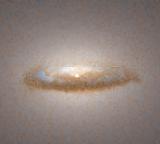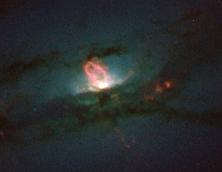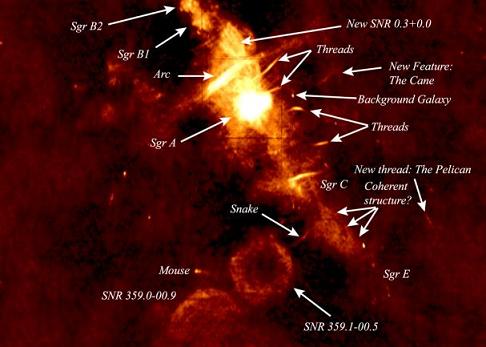

The nucleus of our galaxy is found in the constellation of Sagittarius. It is the densest part of the galaxy. A cluster of young and old stars surrounded by dust so thick that the inner sections of the nucleus are obscured in the visible spectrum, it is impossible to see the nucleus of the galaxy with an optical telescope. Investigations in other wavelengths show evidence of violent processes at work, which is generally thought to be a massive black hole of about 3 million solar masses. It is believed that all or nearly all galaxies have some type of black-hole at their centre with a mass proportional to the mass of the galaxy and weighing in between one million and a thousand million times the mass of the Sun. Recently a few galaxies have been found that do not appear to have black-holes at their centre but these are the exceptions.


The above images show the activities of black holes in the center of two different distant galaxies. Unlike the name suggests, black holes are anything but black. Although the black hole is invisible itself it devours stars that come too close and generates jets of material. Of particular interest is the jet visible in the second image where matter is ejected along the poles of the black hole. Both images where taken by the Hubble Space Telescope.

Chandra X-ray Observatory image of the center of the Milky Way.
Credit: N. E. Kassim, D. S. Briggs, T. J. W. Lazio, T. N. LaRosa, J. Imamura (NRL/RSD)
The label Sgr A points towards an area that is believed to hold a super massive black hole. Sgr A is seen as a radio source through the dust. It appears to be a faint quasar like object that is thought to be a 2.6 million solar mass black hole.
However the black hole at the center of our galaxy is not very active as it has devoured all of the dust, stars and gas near to it.